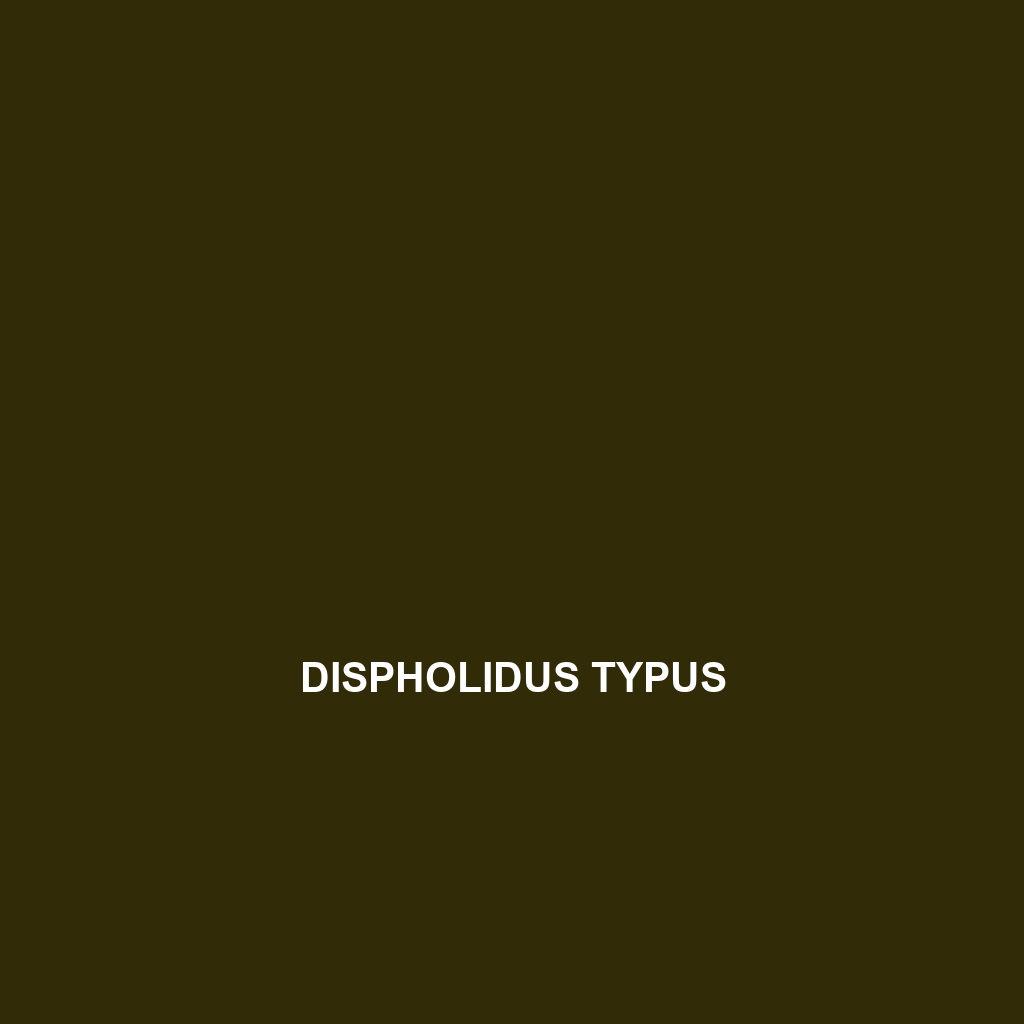Common Name
Dispholidus typus
Scientific Name
Dispholidus typus
Habitat
Dispholidus typus, commonly known as the boomslang, primarily inhabits the lush environments of sub-Saharan Africa. This snake thrives in various habitats, including rainforests, savannas, and woodland areas, where it can easily blend into the foliage. Typically found at altitudes ranging from sea level to around 2,000 meters, the boomslang prefers warm climates and is often seen basking among trees or shrubs. Its affinity for trees makes it a common sight in temperate forests as well, where it uses its habitat for both hunting prey and as a refuge from predators.
Physical Characteristics
The boomslang is a slender snake, reaching lengths of 1.2 to 2.2 meters (4 to 7 feet). Its most distinctive feature is its large, bulging eyes, which provide excellent vision, especially in low-light conditions. The coloration of Dispholidus typus varies significantly between males and females. Males are typically more vividly colored, displaying bright green or yellow hues, often with dark spots, which help them camouflage among leaves. In contrast, females generally exhibit a dull brown or grey coloration, blending seamlessly into the bark of trees or the forest floor. This sexual dimorphism aids in mating rituals and predation.
Behavior
Dispholidus typus is known for its arboreal lifestyle, spending much of its time in the trees. It is primarily a nocturnal species, becoming active at night to hunt for prey. Its social behavior is relatively solitary, though males may engage in combat during mating season. The boomslang is non-aggressive unless provoked, utilizing its remarkable ability to remain still and camouflaged to avoid detection. Interestingly, during mating rituals, males will perform a courtship dance that involves weaving and exhibiting their vibrant colors to attract females.
Diet
As a carnivore, Dispholidus typus primarily feeds on small vertebrates, including birds, lizards, and small mammals. Its unique hunting technique involves using its excellent vision to spot prey from a distance before swiftly striking, employing the potent hemotoxic venom to immobilize its victim. The boomslang’s diet also occasionally includes amphibians and even the eggs of birds. Unlike many other snake species, it does not consume large prey, making it an effective and adept hunter.
Reproduction
The reproductive cycle of Dispholidus typus typically occurs during the warmer months, with mating peaks in spring and summer. Following a gestation period of around 30 to 40 days, females lay between 15 to 30 eggs in secluded areas, often near water bodies or moist environments. Parental care is minimal; once the eggs hatch, the juvenile boomslangs are independent and must fend for themselves immediately. This strategy increases the chances of survival by keeping the offspring away from potential predators.
Conservation Status
The conservation status of Dispholidus typus is currently classified as Least Concern by the International Union for Conservation of Nature (IUCN). While its population is stable, habitat loss due to deforestation and human encroachment poses a potential threat. Several conservation efforts are underway in various regions to protect the natural habitats of this fascinating species, which emphasize the importance of preserving biodiversity and ecosystem health.
Interesting Facts
One of the most intriguing aspects of Dispholidus typus is its potent venom, recognized as one of the most lethal among snakes. Remarkably, while they have a fearsome reputation, boomslangs are rarely aggressive towards humans; bites mainly occur when they are mistakenly provoked. Another fascinating fact is that their name ‘boomslang’ comes from the Afrikaans language, meaning “tree snake,” highlighting its arboreal lifestyle.
Role in Ecosystem
Dispholidus typus plays a vital role as a predator in its ecosystem, helping to maintain the population dynamics of the species it hunts. By preying on various animals such as birds and rodents, the boomslang contributes to controlling the populations of these species, which in turn influences vegetation growth and the overall health of the ecosystem. Additionally, through its role as both predator and prey, the boomslang supports the intricate food web within its habitat, making it an essential component of ecological balance.
